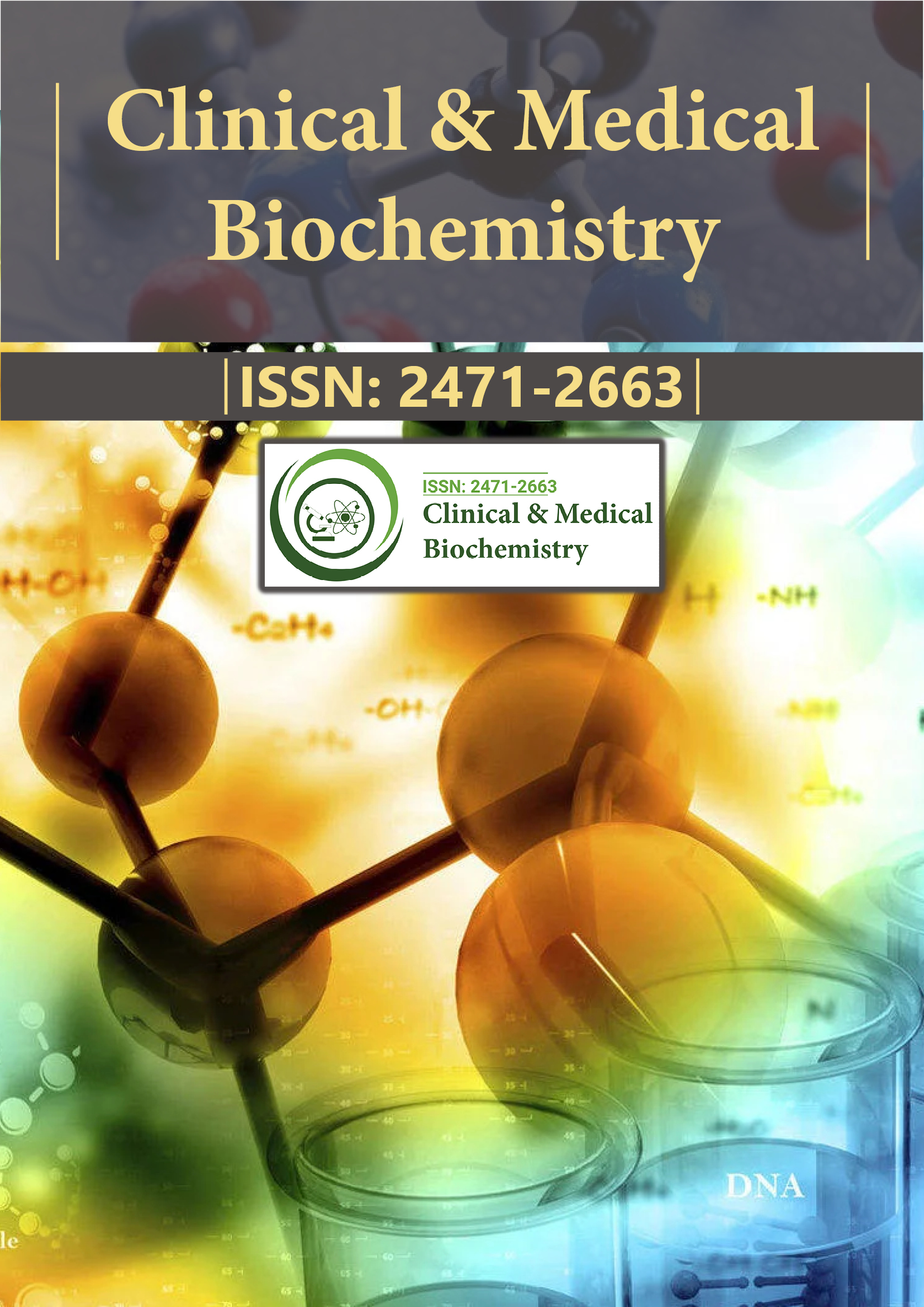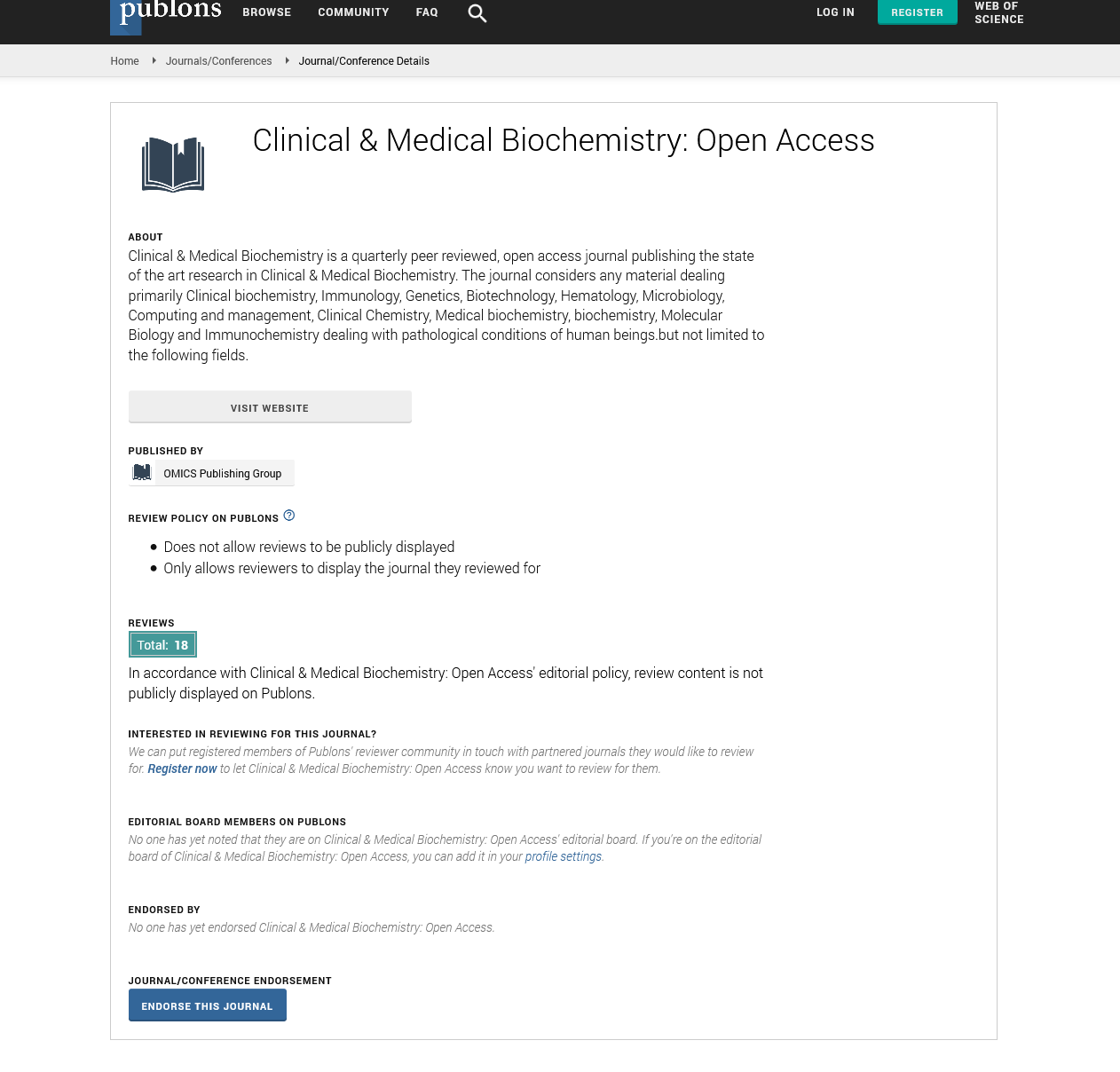Indexed In
- RefSeek
- Directory of Research Journal Indexing (DRJI)
- Hamdard University
- EBSCO A-Z
- OCLC- WorldCat
- Scholarsteer
- Publons
- Euro Pub
- Google Scholar
Useful Links
Share This Page
Journal Flyer

Open Access Journals
- Agri and Aquaculture
- Biochemistry
- Bioinformatics & Systems Biology
- Business & Management
- Chemistry
- Clinical Sciences
- Engineering
- Food & Nutrition
- General Science
- Genetics & Molecular Biology
- Immunology & Microbiology
- Medical Sciences
- Neuroscience & Psychology
- Nursing & Health Care
- Pharmaceutical Sciences
Perspective - (2024) Volume 10, Issue 4
Biochemical Insights into Cystic Fibrosis: Mechanisms of CFTR Dysfunction and Clinical Implications
Andrew Robert*Received: 25-Nov-2024, Manuscript No. CMBO-24-28346; Editor assigned: 27-Nov-2024, Pre QC No. CMBO-24-28346 (PQ); Reviewed: 12-Dec-2024, QC No. CMBO-24-28346; Revised: 20-Dec-2024, Manuscript No. CMBO-24-28346 (R); Published: 27-Dec-2024, DOI: 10.35841/2471-2663.24.10.233
Description
Cystic Fibrosis (CF) is a genetic disorder that affects multiple organs, including the lungs, pancreas, liver and intestines. It is caused by mutations in the CFTR (Cystic Fibrosis Transmembrane Conductance Regulator) gene, which encodes a protein responsible for regulating the transport of chloride ions across cell membranes. This defective protein leads to thick, sticky mucus accumulation in various organs, causing severe complications, particularly in the respiratory and digestive systems. The biochemistry of cystic fibrosis is deeply rooted in the dysfunction of the CFTR protein and understanding these biochemical mechanisms is important for diagnosing and managing the disease.
The CFTR protein plays an important role in the movement of chloride ions across the epithelial cell membranes, which is essential for maintaining the balance of fluids in various organs. In normal cells, CFTR facilitates the secretion of chloride ions into the mucus, which helps keep it thin and fluid. This process is essential for the proper functioning of the lungs, pancreas and other organs. However, in cystic fibrosis, mutations in the CFTR gene result in either the absence or malfunction of the CFTR protein, disrupting chloride transport. As a result, the affected organs, particularly the lungs, produce thick, sticky mucus that is difficult to clear and serves as a breeding ground for bacteria, leading to recurrent infections and inflammation.
At the biochemical level, the CFTR protein functions as an ion channel, specifically a chloride channel, in the cell membrane. The proper function of this channel requires energy in the form of ATP, which is used to drive the movement of chloride ions. The mutation in the CFTR gene leads to a misfolded or dysfunctional protein, which impairs chloride transport. In some cases, the CFTR protein may be produced but is not properly transported to the cell membrane, while in other cases, the protein is present but does not function correctly due to a defect in its ion transport mechanism. This disruption of chloride ion transport leads to an imbalance of salt and water in the affected tissues, causing the thickened mucus that characterizes cystic fibrosis.
In the pancreas, the malfunctioning CFTR protein disrupts the normal flow of digestive enzymes, leading to pancreatic insufficiency. Normally, the pancreas secretes enzymes that are essential for the digestion of food, particularly fats and proteins. In cystic fibrosis, however, the thickened mucus obstructs the pancreatic ducts, preventing these enzymes from reaching the intestines. This results in malabsorption of nutrients, including fats, proteins and fat-soluble vitamins (A, D, E and K), leading to malnutrition and weight loss in individuals with CF.
In conclusion, cystic fibrosis is a complex genetic disorder with profound biochemical implications, particularly related to the dysfunction of the CFTR protein. Understanding the biochemical mechanisms behind CF has paved the way for new diagnostic approaches and targeted therapies. The ongoing research into the biochemistry of cystic fibrosis continues to improve treatment options and offers hope for better management and potential cures in the future.
Citation: Robert A (2024). Biochemical Insights into Cystic Fibrosis: Mechanisms of CFTR Dysfunction and Clinical Implications. Clin Med Bio Chem. 10:233.
Copyright: © 2024 Robert A. This is an open-access article distributed under the terms of the Creative Commons Attribution License, which permits unrestricted use, distribution, and reproduction in any medium, provided the original author and source are credited.

